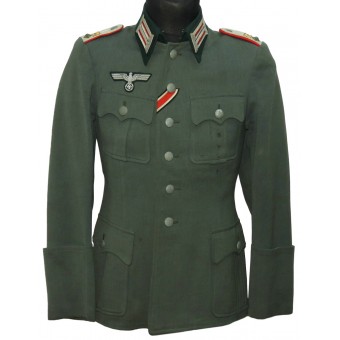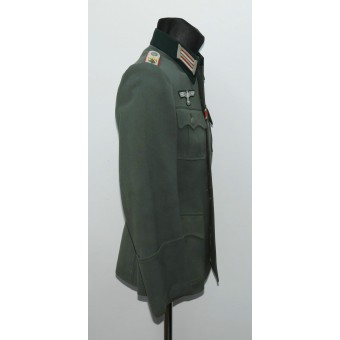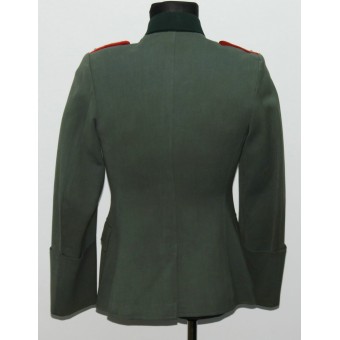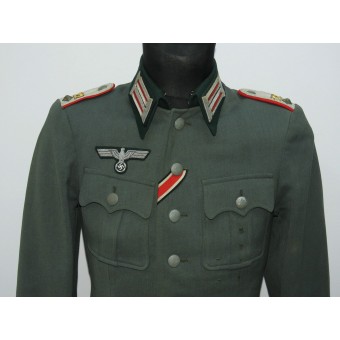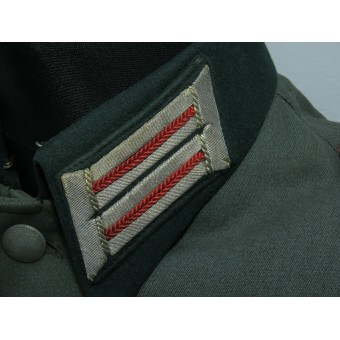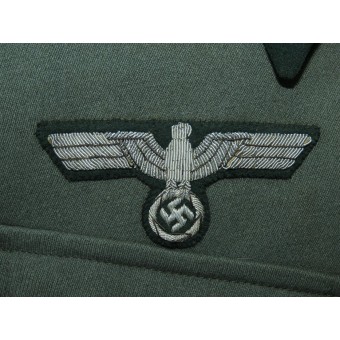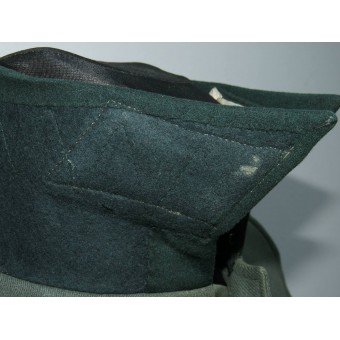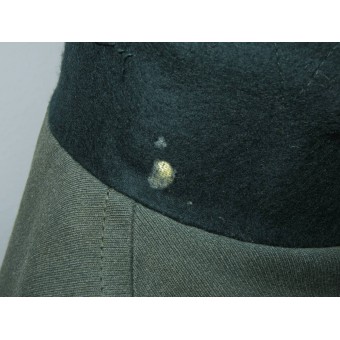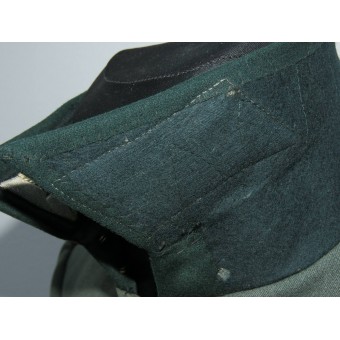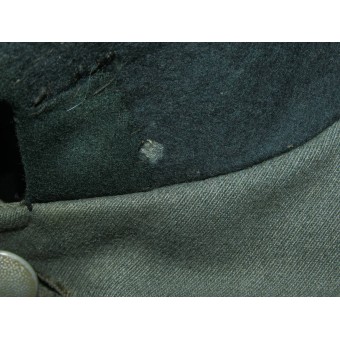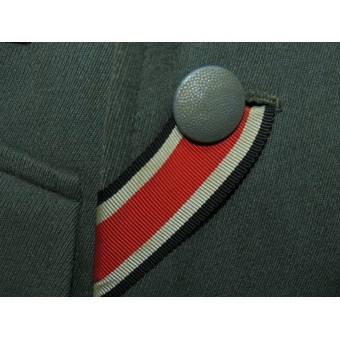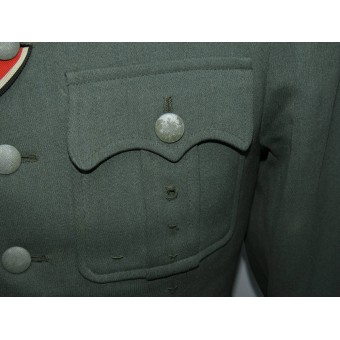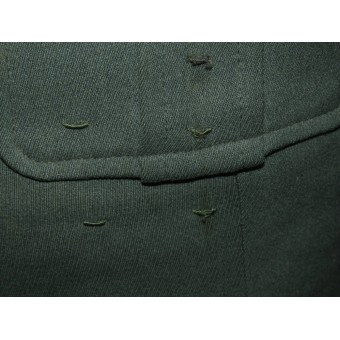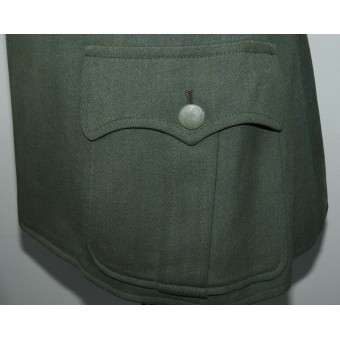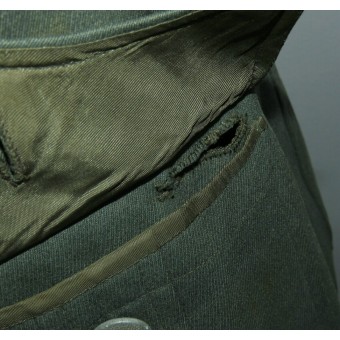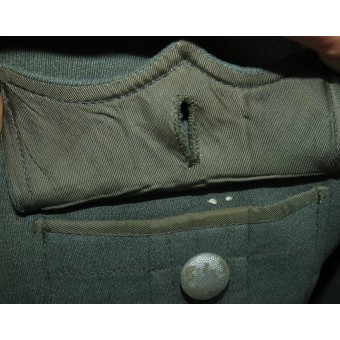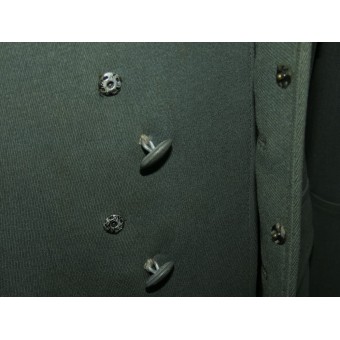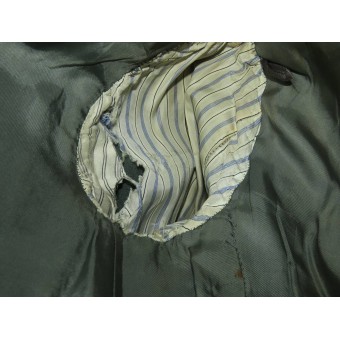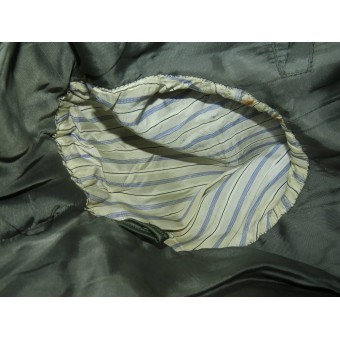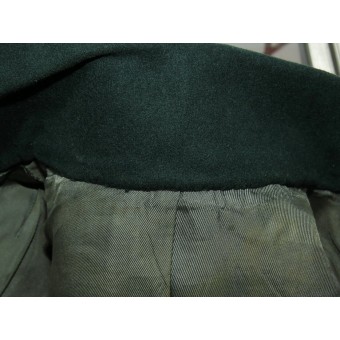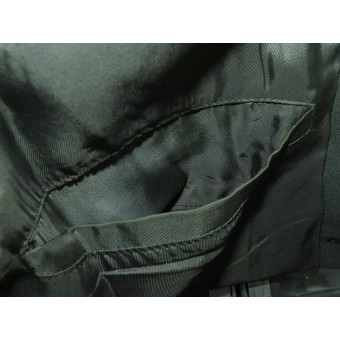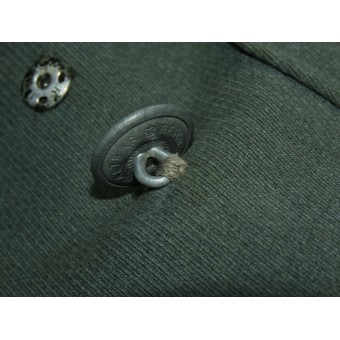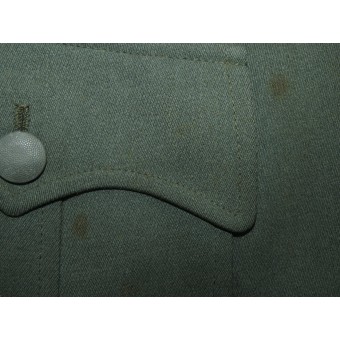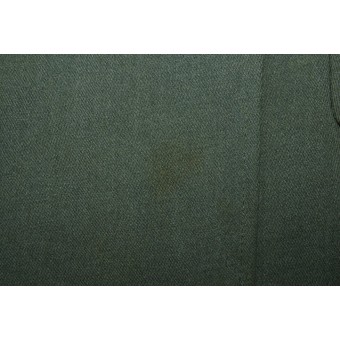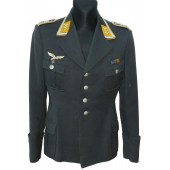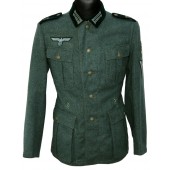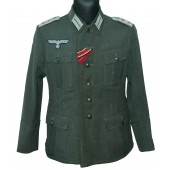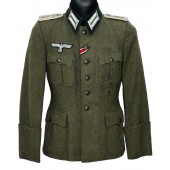A Lieutenant of the 22nd Artillery Regiment of the Wehrmacht Feldluse
A Lieutenant of the 22nd Artillery Regiment of the Wehrmacht Feldluse. Private purchased. Made of merino diagonal tricot, excellent pre-war quality. The owner was awarded with two grades of the Iron Cross, as well as other awards, as evidenced by the loops on the left side of the tunic. The ribbon of the iron cross in the buttonhole was placed in ww2 period by the owner and corresponds to the wear and tear of the general condition of the tunic. The eagle and the collar tabs embroidered with bullion embroidery are also original to the tunic. The shoulder straps were removed, most probably during the cleaning, but we guess they were placed back a long time ago since the red felt lining of the shoulder strap mixed with the material of the tunic, which is due to its long wear. The tunic is in excellent condition, with traces of use, without visible damage and traces of moths. Small size, about 46.
Parts of the 22nd artillery regiment were initially attached to the 22nd Infantry Division and in 1941, most of the unit fought in the Crimea in the Sevastopol area, later the 2nd division fought in Crete and Africa, and at the end of the war Greece, Serbia, and Croatia. During the mobilization of 1941, two batteries were attached to the 269th artillery regiment, 269th infantry division, which fought on the Wolchow front. At the beginning of 1942, the first battalion was attached to reinforce the 229th artillery regiment as part of the 197th infantry division, which fought near Smolensk, Vyazma, Moscow, Gzhatsk, and Rzhev. In 1943: Nevel and Orsha, and in the 1944 year they were defeated near Vitebsk during the offensive of the Red Army during Operation Bagration
A Lieutenant of the 22nd Artillery Regiment of the Wehrmacht Feldluse. Private purchased. Made of merino diagonal tricot, excellent pre-war quality. The owner was awarded with two grades of the Iron Cross, as well as other awards, as evidenced by the loops on the left side of the tunic. The ribbon of the iron cross in the buttonhole was placed in ww2 period by the owner and corresponds to the wear and tear of the general condition of the tunic. The eagle and the collar tabs embroidered with bullion embroidery are also original to the tunic. The shoulder straps were removed, most probably during the cleaning, but we guess they were placed back a long time ago since the red felt lining of the shoulder strap mixed with the material of the tunic, which is due to its long wear. The tunic is in excellent condition, with traces of use, without visible damage and traces of moths. Small size, about 46.
Parts of the 22nd artillery regiment were initially attached to the 22nd Infantry Division and in 1941, most of the unit fought in the Crimea in the Sevastopol area, later the 2nd division fought in Crete and Africa, and at the end of the war Greece, Serbia, and Croatia. During the mobilization of 1941, two batteries were attached to the 269th artillery regiment, 269th infantry division, which fought on the Wolchow front. At the beginning of 1942, the first battalion was attached to reinforce the 229th artillery regiment as part of the 197th infantry division, which fought near Smolensk, Vyazma, Moscow, Gzhatsk, and Rzhev. In 1943: Nevel and Orsha, and in the 1944 year they were defeated near Vitebsk during the offensive of the Red Army during Operation Bagration


